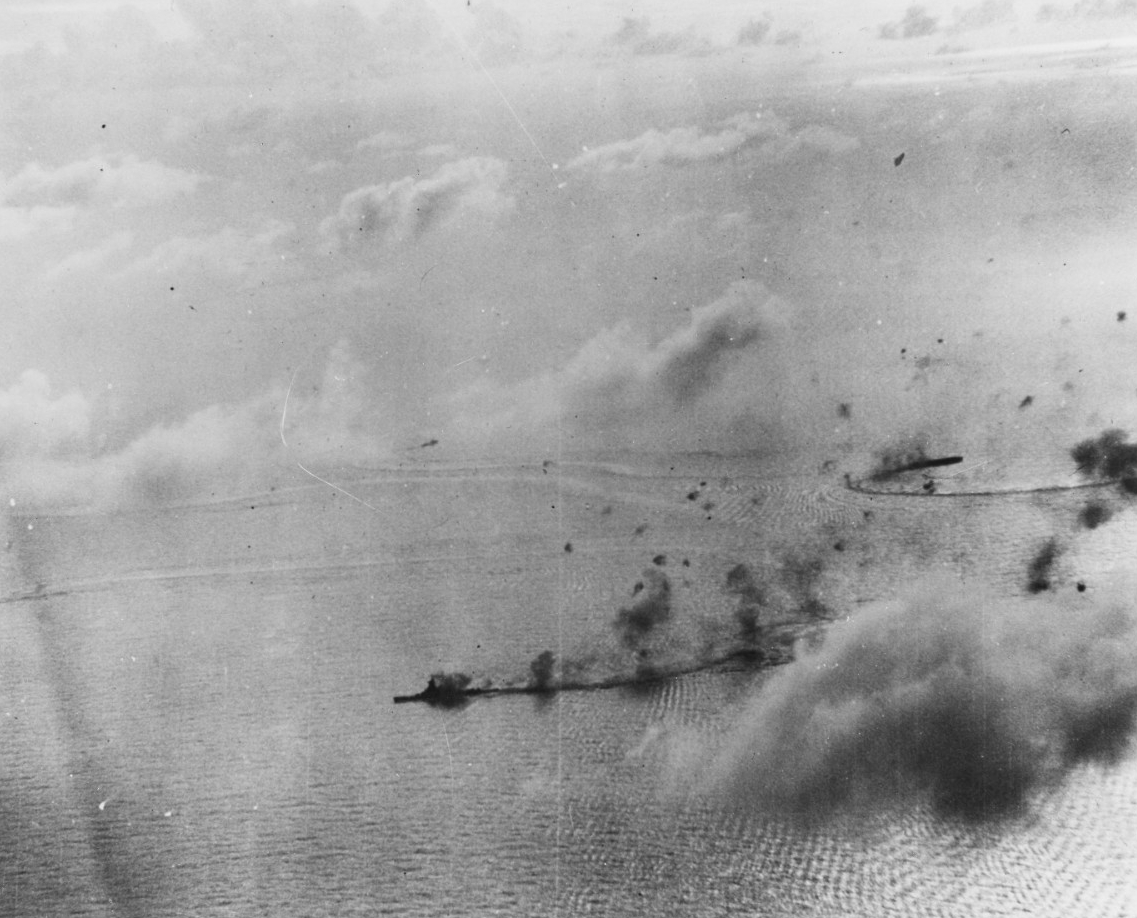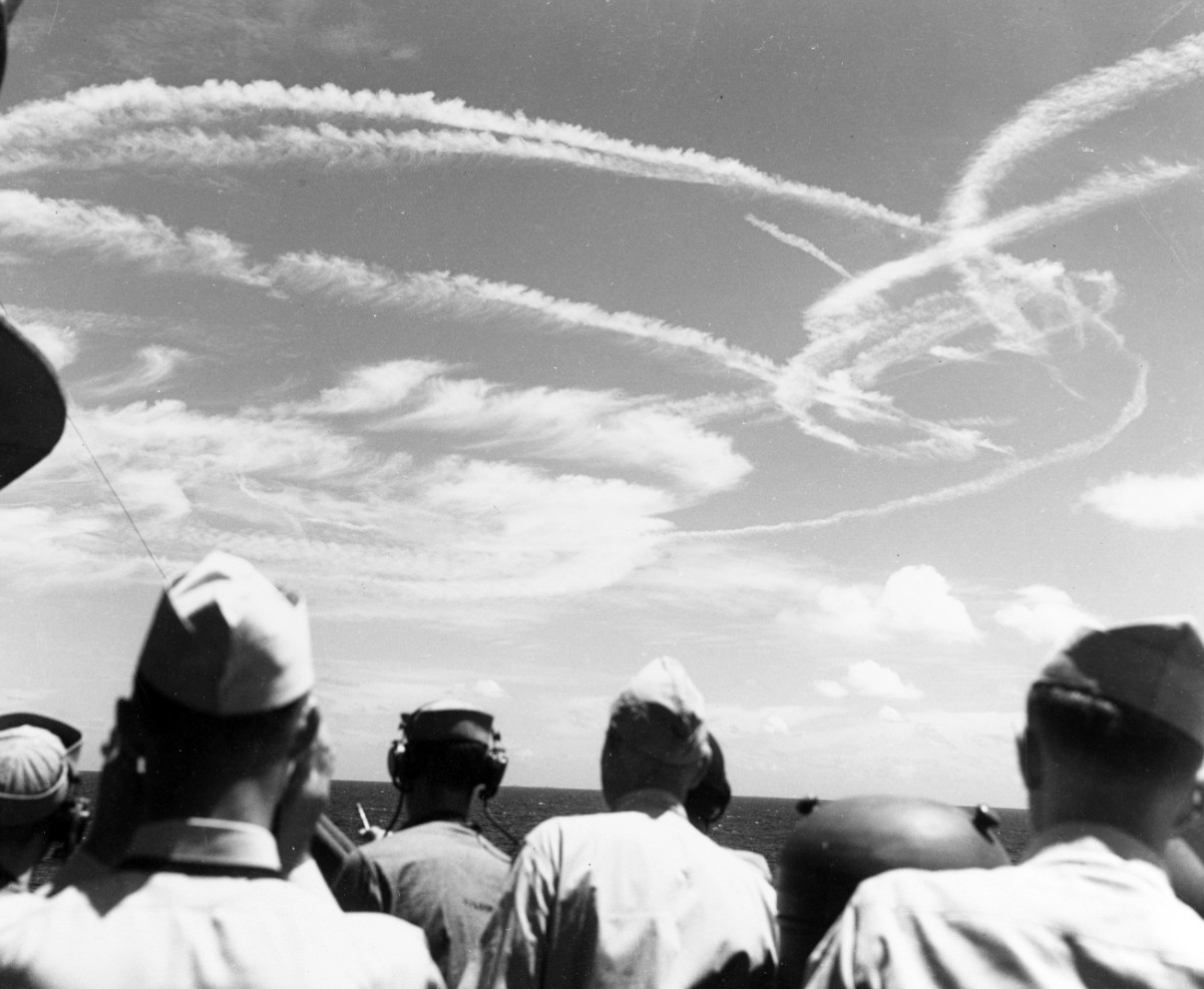- General Collections
- Expand navigation for 1941 1941
- Expand navigation for Prelude to War Prelude to War
- Expand navigation for Pearl Harbor Attack Pearl Harbor Attack
- Expand navigation for Philippines, Guam, and Wake Attacks Philippines, Guam, and Wake Attacks
- Expand navigation for 1942 1942
- Expand navigation for Battles of Java Sea and Sunda Strait Battles of Java Sea and Sunda Strait
- Bataan and Corregidor
- Early Naval Raids
- Doolittle Raid
- Expand navigation for Battle of the Coral Sea Battle of the Coral Sea
- Battle of Midway
- Submarine Combat Patrols
- Expand navigation for Battle of the Atlantic Battle of the Atlantic
- Expand navigation for Solomons Campaign: Guadalcanal Solomons Campaign: Guadalcanal
- Expand navigation for Operation Torch: Invasion of North Africa Operation Torch: Invasion of North Africa
- Expand navigation for Building the Infrastructure for War Building the Infrastructure for War
- Expand navigation for Manning the U.S. Navy Manning the U.S. Navy
- Expand navigation for 1943 1943
- Expand navigation for Establishment of Numbered Fleets Establishment of Numbered Fleets
- Expand navigation for The Aleutians Campaign The Aleutians Campaign
- Battle of the Atlantic—Continued
- Expand navigation for On the Offensive Beyond Guadalcanal On the Offensive Beyond Guadalcanal
- Expand navigation for Sicilian Campaign: Operation Husky Sicilian Campaign: Operation Husky
- Expand navigation for Tarawa: Breaking into the Gilberts Tarawa: Breaking into the Gilberts
- Expand navigation for Landings at Salerno, Italy: Operation Avalanche Landings at Salerno, Italy: Operation Avalanche
- Naval Air Strikes Against German Shipping: Operation Leader
- Expand navigation for 1944 1944
- Operation Shingle: Landing at Anzio, Italy
- Gamble at Los Negros: The Admiralty Islands Campaign
- Evacuation by Submarine: USS Angler in the Philippines
- Securing New Guinea: Operations Reckless and Persecution
- Exercise Tiger: Disaster at Slapton Sands
- Expand navigation for Defeating the Sharks: The Capture of U-505 Defeating the Sharks: The Capture of U-505
- Pearl Harbor Ablaze Again: The West Loch Disaster
- Expand navigation for Operation Overlord: Invasion of Normandy Operation Overlord: Invasion of Normandy
- Operation Forager: The Battle of Saipan
- Expand navigation for The Battle of the Philippine Sea The Battle of the Philippine Sea
- Expand navigation for Port Chicago Naval Magazine Explosion Port Chicago Naval Magazine Explosion
- Expand navigation for Operation Forager Continued: Landings on Guam and Tinian Operation Forager Continued: Landings on Guam and Tinian
- Expand navigation for Operation Dragoon: The Invasion of Southern France Operation Dragoon: The Invasion of Southern France
- Expand navigation for Operation Stalemate II: The Battle of Peleliu Operation Stalemate II: The Battle of Peleliu
- Expand navigation for The Battle of Leyte Gulf The Battle of Leyte Gulf
- Expand navigation for The Battle off Samar: The Sacrifice of "Taffy 3" The Battle off Samar: The Sacrifice of "Taffy 3"
- United States Navy War Instructions, 1944
- The Japanese “Hell Ships” of World War II
- Expand navigation for 1945 1945
- Expand navigation for Battle of Iwo Jima Battle of Iwo Jima
- Navy Nurses Behind Enemy Lines in the Philippines
- Operation Plunder: Crossing the Rhine
- Expand navigation for Battle of Okinawa Battle of Okinawa
- Okinawa Highlights: 4-11 April 1945
- Battle of Okinawa: Historic Overview & Importance
- Okinawa Highlights: 12–19 April 1945
- Kamikaze Attack on USS Isherwood
- The Destruction of USS Pringle
- The Sinking of USS Little
- The Most Dangerous Place off Okinawa
- A Kamikaze Attack on New Mexico, Fifth Fleet Flag: A Photo Essay
- A Ceremony for the Fallen: Aftermath of a Kamikaze Attack
- Admiral Spruance Recounts Kamikaze Attack on His Flagship, New Mexico (BB-40)
- On the Verge of Breaking Down Completely: Combat Fatigue off Okinawa and the Destruction of USS Longshaw
- Investigating Okinawa: The Story Behind A Kamikaze Pilot’s Scarf
- The Loss of USS Twiggs at Okinawa
- The Most Difficult Antiaircraft Problem Yet Faced By the Fleet
- Expand navigation for Victory in Europe (V-E) Day Victory in Europe (V-E) Day
- Expand navigation for Japan's Surrender and Aftermath Japan's Surrender and Aftermath
- Expand navigation for World War II Profiles in Duty World War II Profiles in Duty
- ENS Allen W. Bain and Minneapolis (CA-36)
- LT Eugene A. Barham and Laffey (DD-459)
- LT Richard H. Best of VB-6
- LCDR Joseph W. Callahan and Ralph Talbot (DD-390)
- LT Albert P. “Scoofer” Coffin of Torpedo Ten
- MAtt1/c Leonard R. Harmon and CDR Mark H. Crouter of San Francisco (CA-38)
- CDR Frank A. Erickson—First Helicoptar SAR
- CDR Ernest E. Evans of Johnston (DD-557)
- S1/c James Fahy on Montpelier (CL-57)
- Float Plane Pilots in the Pacific
- AMM1/c Bruno P. Gaido of VS-6
- CAPT Joy Bright Hancock
- Charles Kleinsmith and Yorktown (CV-5)
- LCDR Edwin T. Layton of PACFLT N2
- LCDR Maxwell F. Leslie of VB-3
- LCDR Eugene E. Lindsey of VT-6
- ENS Donald W. Lynch and Mugford (DD-389)
- Theodore W. Marshall of VP-22
- LCDR Lance E. Massey of VT-3
- LCDR Bernard F. McMahon and Drum (SS-228)
- ARM1/c Oliver Rasmussen
- LTJG Melvin C. Roach, Guadalcanal Fighter Pilot
- CDR Joseph J. Rochefort and "Station Hypo"
- Chief Machinist William A. Smith and Enterprise (CV-6)
- LTJG Steffenhagen and Shōhō
- Submerged Appendectomy
- LCDR John C. Waldron of VT-8
- LCDR William J. “Gus” Widhelm of Scouting Eight
- Theater of Operations--Pacific
- Operations
- Boats-Ships--Submarine
- Boats-Ships--Cruisers
- Aircraft--Fixed Wing
- Boats-Ships--Aircraft Carriers
- Boats-Ships--Battleship
- Boats-Ships--Destroyer
- Photograph
- Historical Summary
- World War II 1939-1945
- Image (gif, jpg, tiff)
- NHHC
The Battle of the Philippine Sea
19–20 June 1944
Overview
Following the build-up of the U.S. Navy’s fast carrier forces in the central Pacific, the American drive into the strategic Marshall Islands chain, and the foreseeable U.S. victory on Saipan (15 June–9 July), the Japanese naval leadership were convinced that the moment for a decisive large-scale fleet action had come. Previous attempts to win a climactic battle with the U.S. Navy—Coral Sea, Midway, and the sum of the sea battles in the Solomons—had either failed or had come short of a war-changing victory.
The U.S. Navy’s Task Force 58 (Fast Carrier Task Force) clashed with the Japanese navy’s Carrier Division 3 on 19 and 20 June in the Battle of the Philippine Sea in a series of engagements mainly fought out in the air, over waters several hundred miles west of Saipan. By the evening of 20 June, Task Force 58’s aircraft had succeeded in breaking the back of Japanese naval aviation and the Japanese Combined Fleet’s carrier forces.
The following essay provides a detailed account of the Battle of the Philippine Sea and analyzes its great significance in determining the further course of the war in the Pacific:
"The Great Marianas Turkey Shoot" by NHHC historian Guy J. Nasuti
Imagery
Battle of the Philippine Sea Photo Gallery
Other Resources
U.S. Navy Vessels in the Battle of the Philippine Sea and Marianas Operational Area
NHHC publication: Winning a Future War—War Gaming and Victory in the Pacific War, by Norman Friedman. This acclaimed book shows how U.S. naval commanders successfully applied lessons learned from interwar war gaming to victorious carrier operations in World War II.
Footnotes
- Accessibility/Section 508 |
- Employee Login |
- FOIA |
- NHHC IG |
- Privacy |
- Webmaster |
- Navy.mil |
- Navy Recruiting |
- Careers |
- USA.gov |
- USA Jobs
- No Fear Act |
- Site Map |
- This is an official U.S. Navy web site




